There’s a perfectly shaped bright orange pumpkin in my garden. Two, in fact, one a bit bigger than the other. Both are flourishing. How? Beats me.
Every fall, I buy an assortment of decorative winter squashes, which I arrange all over our home. I love fall colors, and bringing in nature is one of my favorite ways to beautify a place. And if I can eat the pretty nature, so much the better.
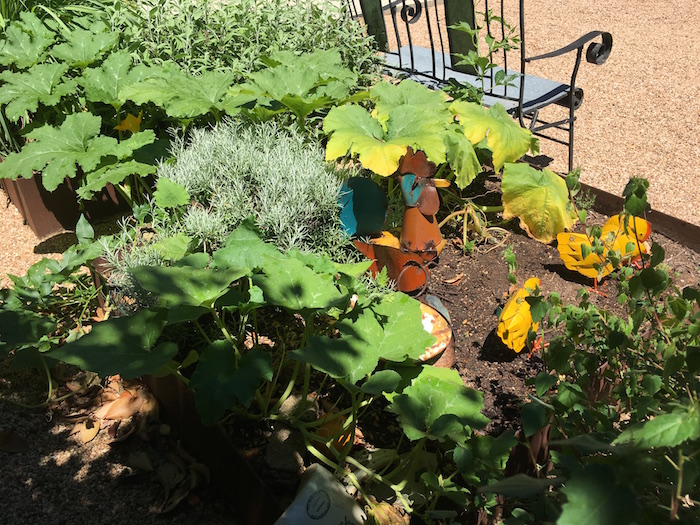
Whether anyone in my family notices, I almost always buy three pie pumpkins, one for each of our kids, in various sizes. Oh, how I savor pumpkin! Over the months, one by one, they are cooked and pureed and folded into recipes. Smoothies, biscotti, muffins, soup, veggie side dishes, bunt cakes…we eat all of those pumpkins. Even the cat gets a pumpkin treat. What isn’t immediately consumed, I freeze for later use. It’s spring now, and there’s no pumpkin left in the freezer.
Did you know? Plural of “squash” is either “squash” or “squashes.”
Those grocery store bins piled high with fall displays of pretty squash are highly effective in their enticement. I buy all sorts. Beautiful fat orange and tiny white pumpkins (called casperita), blue Hubbard squash, striped (tromboncina) and bumpy gourds, acorn squash. I always have an assortment spread around on the kitchen counter. Sprinkle in some sturdy brown post oak acorns and feathery ball moss and voila! Fall!
As time passes, some of those squash go bad. Usually, mold on the bottom does them in. Because I can’t bear to waste anything, I do one of two things with those that are just too yucky to eat: compost or release.
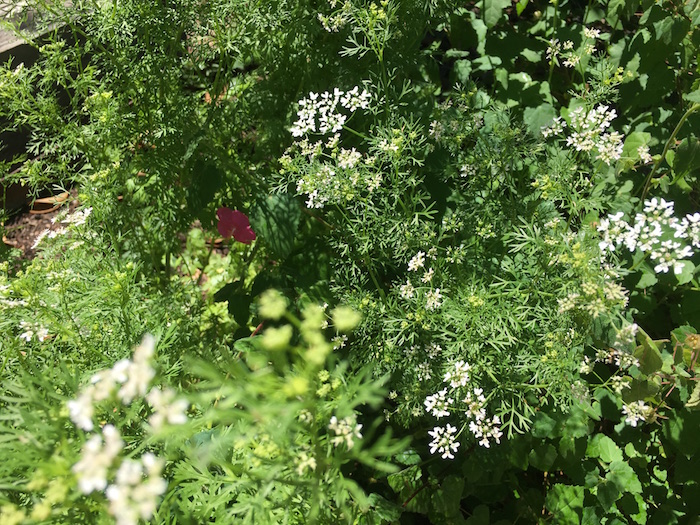
We have two compost barrels (that way, while one’s contents are cooking, the other’s are ready to use). Composting has not only significantly reduced our trash but I feel good about recycling those good organic fruit and veggie bits we’re not eating.
Now, how do I release spoiled vegetables? By abandoning them to nature. I get a big kick out of nestling those soon-to-be-decomposed squashes in my garden beds. Why? They look magical against the brown and meager cold weather contents, like brightly colored fairy houses. It takes a surprisingly long time–all winter–for them to wither away.
And sometimes, I get lucky.
This year, several of last fall’s released squashes moldered and then sprouted. I’ve never had such beautifully spreading vines; usually, the squash borers do their work before the plants mature. But these vines have produced spectacularly vibrant hand-sized blossoms that have entertained the neighbor’s bees (and me). Imagine my delight when I found those hidden baby pumpkins! If I don’t flub up the harvesting, these will be the first pumpkins I’ve ever grown.
Now, I have no idea if the growing season is right (they seem quite early–Halloween is in October) nor do I have the faintest clue when to harvest. Oh, well—this gardener can always Google!
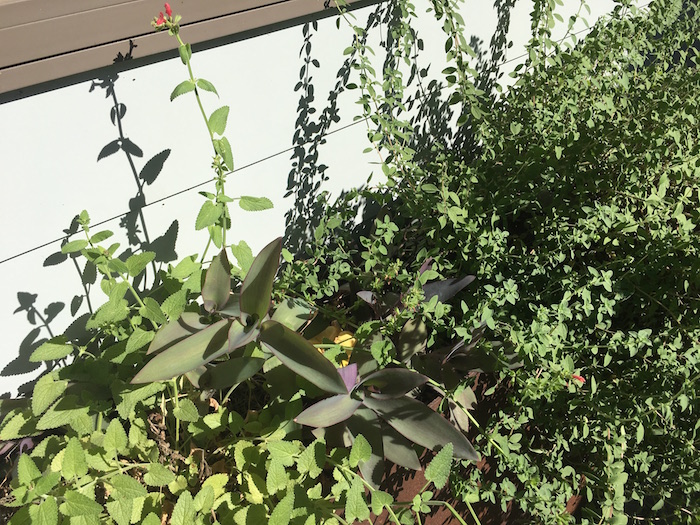
And this is funny–at the same time, I tucked a tiny white pumpkin, one of those casperitas, in the front flowerbed. It’s been hiding next to my oregano and still looks as fresh as the day I nestled in it the dirt. I’m curious how long it’s going to last.
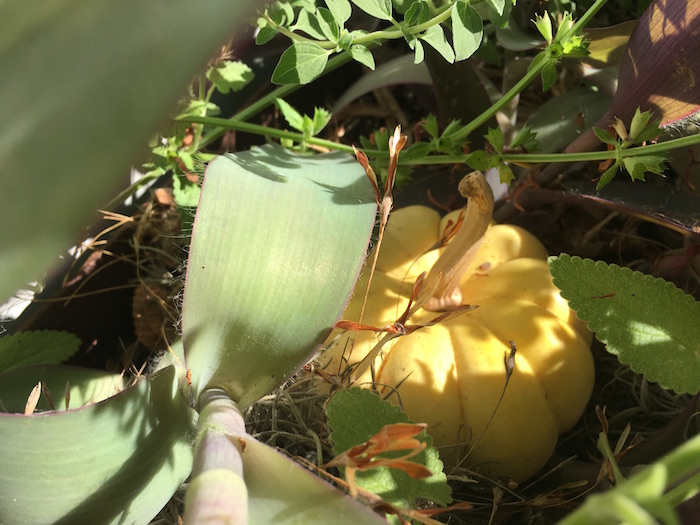
My garden is full of volunteers, flourishing despite my lack of attention. Last season’s cilantro reseeded itself, so exuberantly we couldn’t possibly eat it all. I’ve let it flower, bringing big bunches of the lacy blooms inside. My golden heirloom grape tomato came back—I can’t believe how many tiny green globes are ready for spring ripening. Even the pepper plant, a veteran of two seasons, produced offspring. (Those guys, however, are looking pretty grim thanks to swarms of aphids.) I just tossed in some sweet potatoes that have sprouted–we love those sweet potato greens!
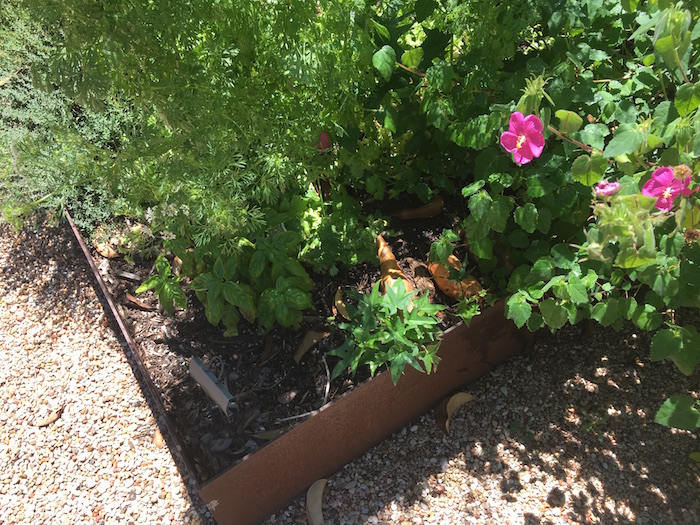
The regulars thrive under my benign neglect—sage, lemongrass, curry plant, mint, thyme. Survival of the fittest, garden style. Every year, I plant basil in the same spot that every basil plant loves. By the first frost, it’ll be waist high and we’ll be struggling to use it all before we lose it.
This lackadaisical attitude toward gardening works for me. At any rate, the experiment of and surprise in “what’s going to grow this year?” keeps me vastly entertained.
And good stuff to eat is a wonderful bonus.

Learn More
“What’s The Difference Between Squash and Pumpkin (and Other Hard Questions)?” by Lindsay-Jean Hard
“How to Grow Pumpkins” by David Grist
“Growing Cilantro” by Joseph Masabni and Patrick Lillard


